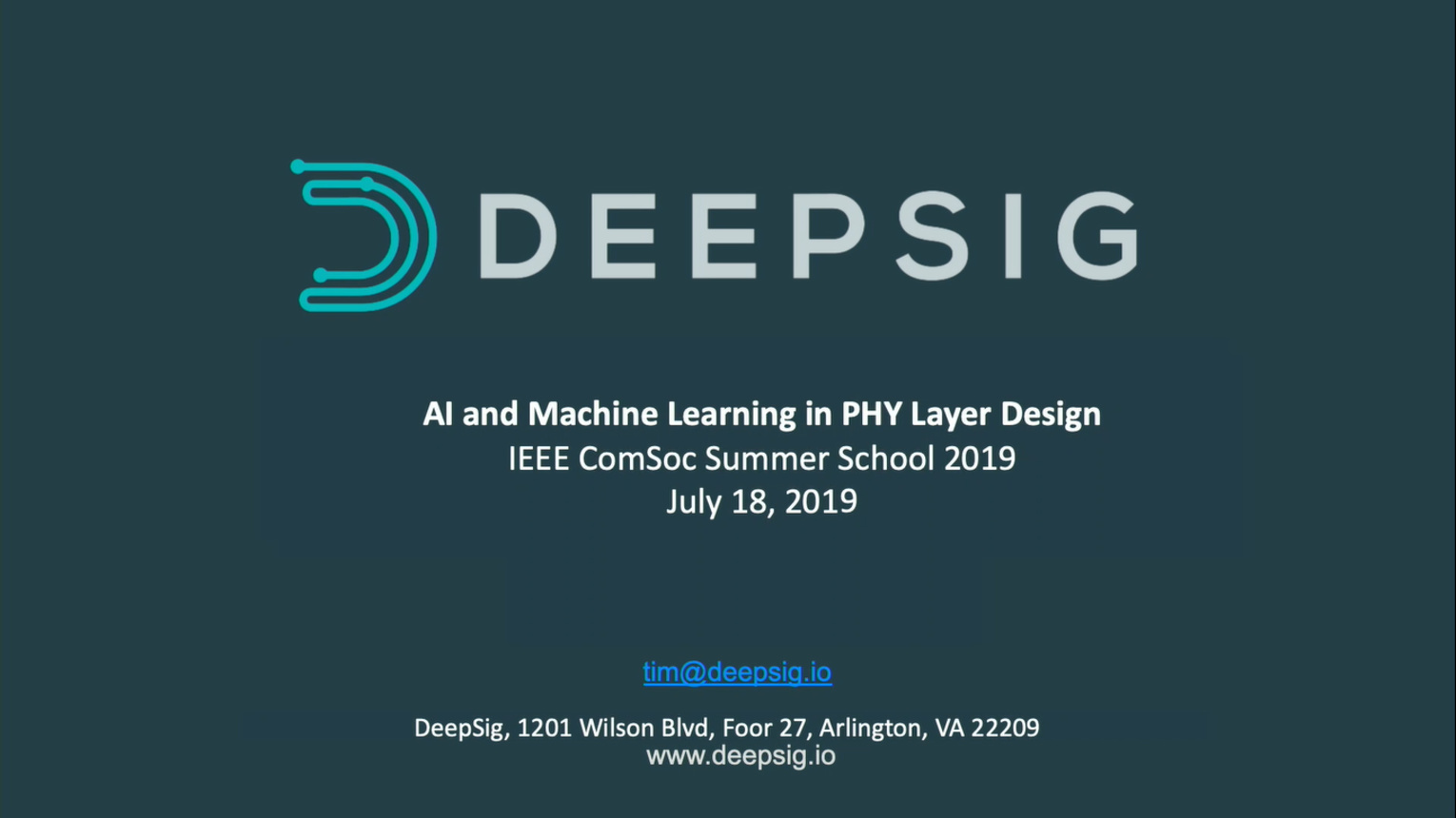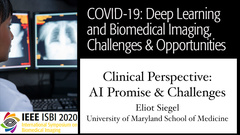
This video program is a part of the Premium package:
Leveraging Machine Learning in the Wireless Physical Layer
- IEEE MemberUS $4.99
- Society MemberUS $0.00
- IEEE Student MemberUS $4.99
- Non-IEEE MemberUS $9.99
Leveraging Machine Learning in the Wireless Physical Layer
From the 2019 IEEE ComSoc Summer School at National Instruments, Austin, TX, USA, Tim O'Shea,Chief Technology Officer, Deepsig, discusses how machine learning has recently seen a number of enormous advances in both computational, algorithmic, and data-driven capabilities. Over the past few years dramatic breakthroughs have been realized in computer vision, natural language processing, and a wide range of other applications. This data driven approach promises as well to drastically transform how we do wireless signal processing in the physical layer, scaling systems from idealized analytic models to incredibly detailed complex data-driven models which work better in the real world, and driving down computational complexity by moving to highly concurrent and compact inference engines. This talk will discuss the key trends and enablers for deep learning and data driven system design, and then it will deep dive into several key applications within wireless physical layer sensing and communications system design, detailing how these approaches can be leveraged and applied, and illustrating key recent works and results which highlight performance advantages of leveraging data driven signal processing and neural network style inference engines for a range of tasks where they can outperform traditional idealized analytic models.
From the 2019 IEEE ComSoc Summer School at National Instruments, Austin, TX, USA, Tim O'Shea,Chief Technology Officer, Deepsig, discusses how machine learning has recently seen a number of enormous advances in both computational, algorithmic, and data-driven capabilities. Over the past few years dramatic breakthroughs have been realized in computer vision, natural language processing, and a wide range of other applications. This data driven approach promises as well to drastically transform how we do wireless signal processing in the physical layer, scaling systems from idealized analytic models to incredibly detailed complex data-driven models which work better in the real world, and driving down computational complexity by moving to highly concurrent and compact inference engines. This talk will discuss the key trends and enablers for deep learning and data driven system design, and then it will deep dive into several key applications within wireless physical layer sensing and communications system design, detailing how these approaches can be leveraged and applied, and illustrating key recent works and results which highlight performance advantages of leveraging data driven signal processing and neural network style inference engines for a range of tasks where they can outperform traditional idealized analytic models.
 Cart
Cart Create Account
Create Account Sign In
Sign In





